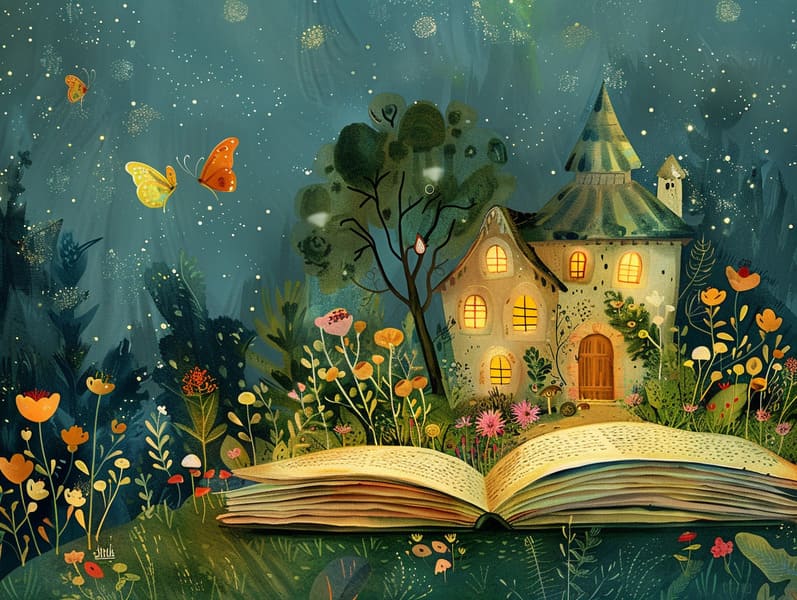The Beginning of Grimm's Fairy Tales with Its Persistent Charm.
The Beginning of Grimm's Fairy Tales with Its Persistent Charm.
Blog Article

Children's fairy tales have old origins. These tales have been whispered from one generation to the next ages before they were ever put on paper. They developed from a variety of societies, including Middle Eastern traditions. They were initially told among grown-ups, often carrying themes and messages pertaining to the societal norms and beliefs of the time.
The Brothers Grimm, Jacob and Wilhelm (the Grimm brothers), were among the first to collect and release many of these beloved fairy tales. Their anthology, "Grimm's Story Collection," included stories like "Cinder Maid," "Little Brother and Little Sister," and "Schneewittchen," which have since become pillars in the world of classic fairy tales. Similarly, H. C. Andersen's imaginative narratives, such as "The Little Mermaid," and "The Duckling that Could," have stolen hearts worldwide, securing their place in the pantheon of famous fairy tales.
Despite being ancient, classic fairy tales remain as significant as ever, especially as kids' bedtime tales. These fantastical tales are now available in many formats, including artistically illustrated books, enchanting animations, and digital fairy tales.
Their continued relevance can be linked to several whimsical characteristics:
Valuable Lessons: Ancient fairy tales often offer important moral lessons. Stories like "The Tale of the Boy Who Cried Wolf" teach the merit of being truthful, while "The Tale of the Tortoise and the Hare" underline the virtues of resolve and humbleness. These narratives offer young readers clear distinctions between correct and incorrect, developing their moral compass in a gentle yet important way.
Sympathy and Perception: Classic fairy tales frequently illustrate figures facing trials and tribulations, provoking listeners to understand with their struggles and encourage their triumphs. For instance, "Beauty's Beast" demonstrates the significance of seeing beyond the surface to realize the real character of a soul, building tenderness and awareness.
Cultural Perception: Many timeless fairy tales are interwoven with the cultural contexts from which they came. Discovering these stories can provide delightful insights into different traditions, building a sense of cultural insight and recognition.
Fantasy and Imagination: The magical elements in classic fairy tales—mythical creatures—activate children’s creative thoughts. These narratives guide readers to mythical realms, fostering fantasy dreams and a sense of wonder that remains a lifetime.
Timeless fairy tales are not only fascinating but also pedagogical. They act as entrancing tools in strengthening various intellectual and emotional capacities in the young. When timeless fairy tales are spoken, they cultivate speech development by presenting new terms and meanings and complex sentence structures. This practice also fosters auditory perception and mental focus, as young readers remain attentive, eager to see what happens next.
Furthermore, debating the themes and characters of timeless fairy tales can foster problem-solving abilities and thought processes. Kids are educated to recognize patterns, guess what will happen, and realize cause and effect. These talks also assist children communicate their thoughts and feelings, contributing to their emotional intelligence.
In today’s online age, the existence of online fairy tales has made these tales more available than ever. Internet sites and applications supply broad selections of Grimm's fairy tales that can be explored or listened through anytime, anywhere. Fairy tales told out loud are particularly widespread, extending an charming way for the young to immerse in these delightful tales. Read-aloud books and narrated videos lead characters and settings to life, often supported by enchanting sound effects and instrumentals that amplify the story journey.
The enduring charm of traditional fairy tales lies in their ability to shift to modern times while staying true to their key morals. Contemporary versions of these tales often highlight more representative characters and modern settings, making them relatable to today’s audience. However, the essential messages of heroism, sympathy, and impartiality remain unchanged, continuing to strike a chord with listeners of all ages.
Old fairy tales also offer a sense of assurance and comprehensibility. They put forth a ordered narrative with a obvious beginning, middle, and end, often ending with the conclusion of conflicts and the triumph of righteousness over wickedness. This regularity can be heartening for the young, delivering a sense of firmness in an shifting world.
Timeless fairy tales continue to spellbind and train new generations, maintaining their delight and importance in modern society. As children's bedtime stories, they afford a perfect blend of captivation and insight, enhancing moral values, empathy, and creativity. The availability of free fairy tales online and the favor of fairy tales narrated ratify that these ancient narratives remain acquirable to new generations.
By upholding and imparting these fairy tales, we continue to esteem the rich tapestry of tales and cultural heritage. Whether you are exploring a artistically illustrated book, seeing a digital collection, or listening via an sound book, the enchantment of classic fairy tales is always within reach. These tales reveal of the immortal power of stories and its ability to hold us together across eras and regions.
Regardless if you are delving into a richly illustrated book, accessing a digital collection, or listening via an read-aloud story, the magic of old fairy tales is always within reach.
These narratives emphasize of the everlasting effect of fairy tales and its ability to unite more info us across eras and regions, casting a charm that delights and instructs alike.